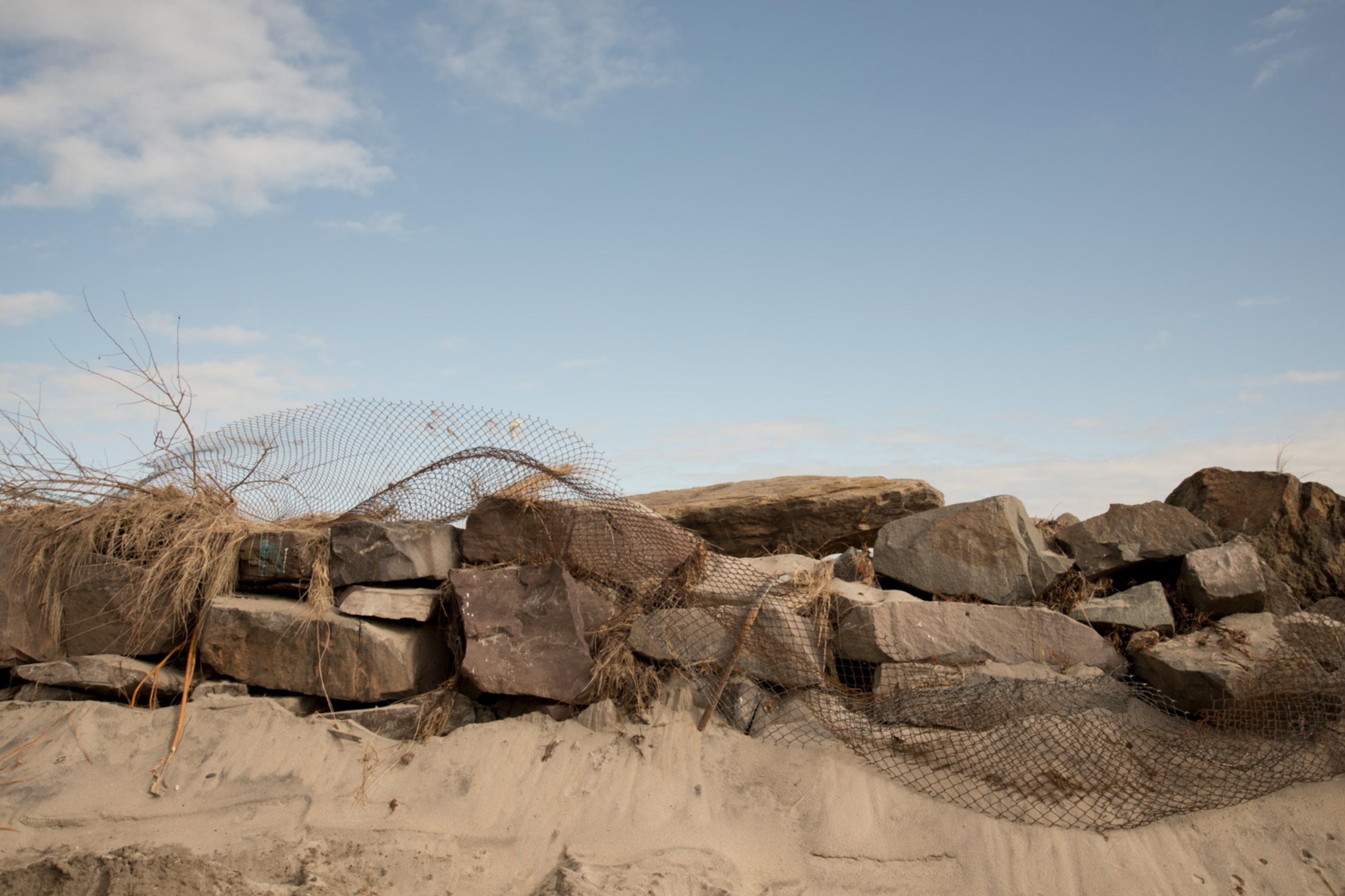As a filmmaker, I see stories in sequence. By using still photography I am able to space the duration of time in between frames farther apart, looking at change over the course of years, decades even, through a sort of extended time lapse. Individual images can stand alone as their own phrases that don’t necessarily string together, but as a whole make a statement or set a mood. I think of a body of images like poetry and a string of video frames akin to prose. In this way photography gives me the freedom to explore time in a different manner. I am interested in the legacy of place, in how we shape and are shaped by our environment. This includes the structures we cling to, the objects we discard, and our relationship with the natural world- how we fight to control and tame nature.
A natural disaster was the catalyst for this series of images. In 2012, Hurricane Sandy destroyed the beach town of Sea Bright, NJ, which sits on a barrier peninsula between the Atlantic Ocean and the Shrewsbury and Navesink Rivers. During the hurricane, the ocean breached the sea wall on one side and the rivers rose on the other to meet in the middle, so that for a brief moment the entire town, including the home of my aunt and uncle, was underwater. For me this was an opportune moment to witness a place changing at a rapid pace. With so many of the structures ruined following the storm, the community would have to rebuild or tear down. For the past nine years, I’ve been photographing along the sea wall as its residents struggle to reconstruct their homes and businesses, rebuild the sea wall, and replenish the beach. This walk has become my pilgrimage. This new landscape is one that shares domesticity and wildness. On the shoreline, there is a constant battle for sovereignty.
As a result of Hurricane Sandy, some buildings were torn down, but most were rebuilt or replaced with larger, more grandiose structures, including re-engineering the sea wall and beach. After seeing Sea Bright gutted by Hurricane Sandy, with every building’s contents set out on the curb for disposal, followed by the mass of new timber during reconstruction that made buildings look like matchsticks, I can’t help but question the very sanity of building here in the face of climate change. As my uncle said, “Sea Bright will never be like what it was. It’ll be something different… The storm destroyed everything, so it’s not going to be the same. It’ll be okay, maybe, until the next storm.”
See more images in the December 2020 issue of Unearthed Online Literary Journal- https://unearthedesf.com/courtneyrile

